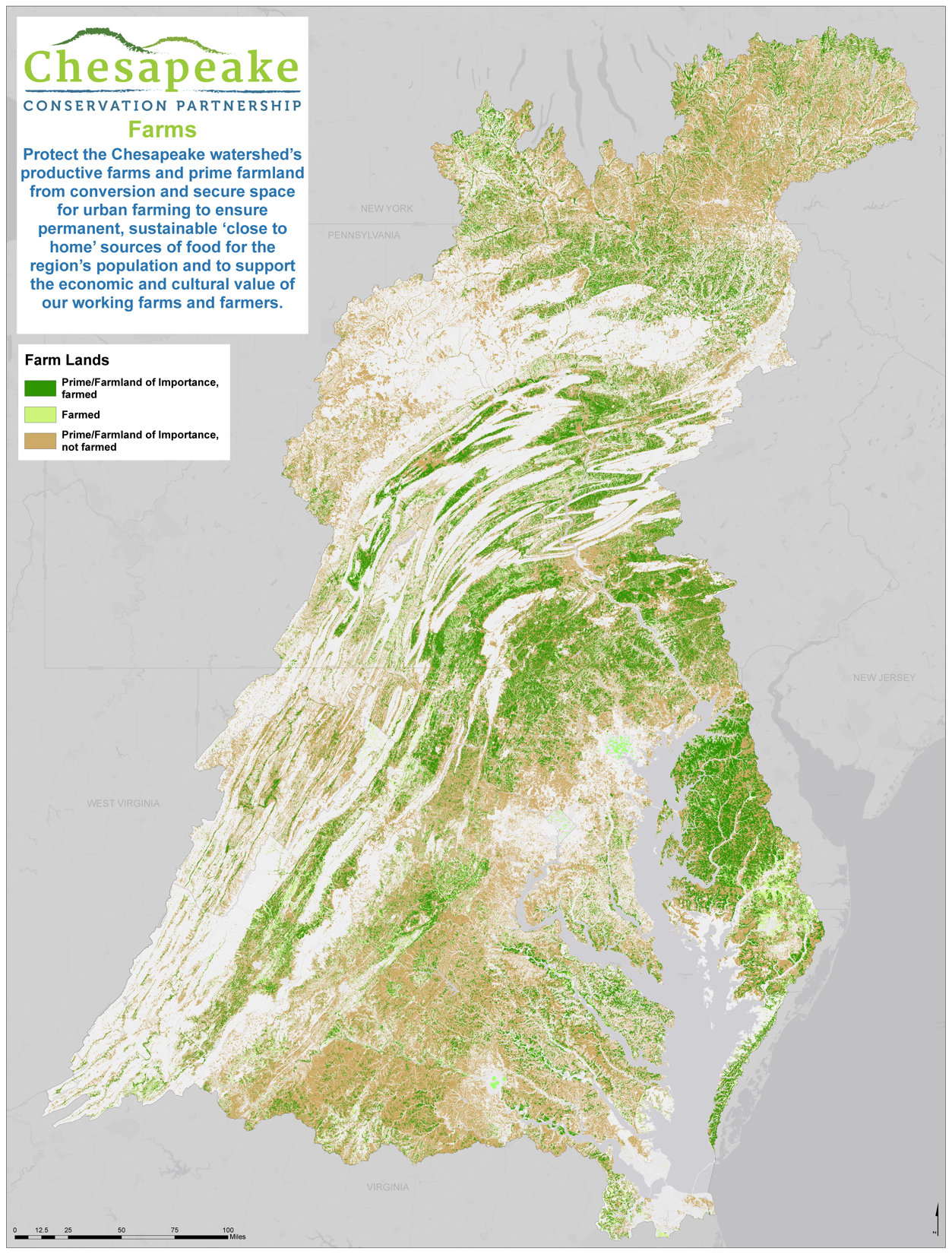Farms
Our Goal
Protect the Chesapeake watershed’s productive farms and prime farmland from conversion and secure space for urban farming to ensure permanent, sustainable ‘close to home’ sources of food for the region’s population and to support the economic and cultural value of our working farms and farmers.
The productive land and prime agricultural soils of the Chesapeake watershed support a rich heritage of working farms. In fact, 6,923,975 acres (17%) of watershed land area are currently being actively used for agricultural purposes. Many farms and related businesses have added economic and cultural value as well, orchards, vineyards, wineries and more. Yet many of our most valuable farm lands are often close to population centers and subject to intense development pressure. Farther away, other regions which supply the largest share of produce coming into the mid-Atlantic are beset by multi-year droughts and climate changes that may have far-reaching impacts. Conserving our region’s farms and prime farmland for long-term food production and security is a priority.
Where We Stand
Analysis identifies 20,547,229 acres of important farmland for conservation, about 50% of the watershed. Of the 13,658,567 acres of important farmland not in production, most (94%) is currently covered by either forest, shrubs or herbaceous vegetation. 2,887,949 acres (13.1%) of farmland important for conservation is permanently protected.
We anticipate numbers changing in the future as we: (1) add data on urban farming acreage; and (2) learn more about how climate change may affect agriculture.
Explore the web map here.

